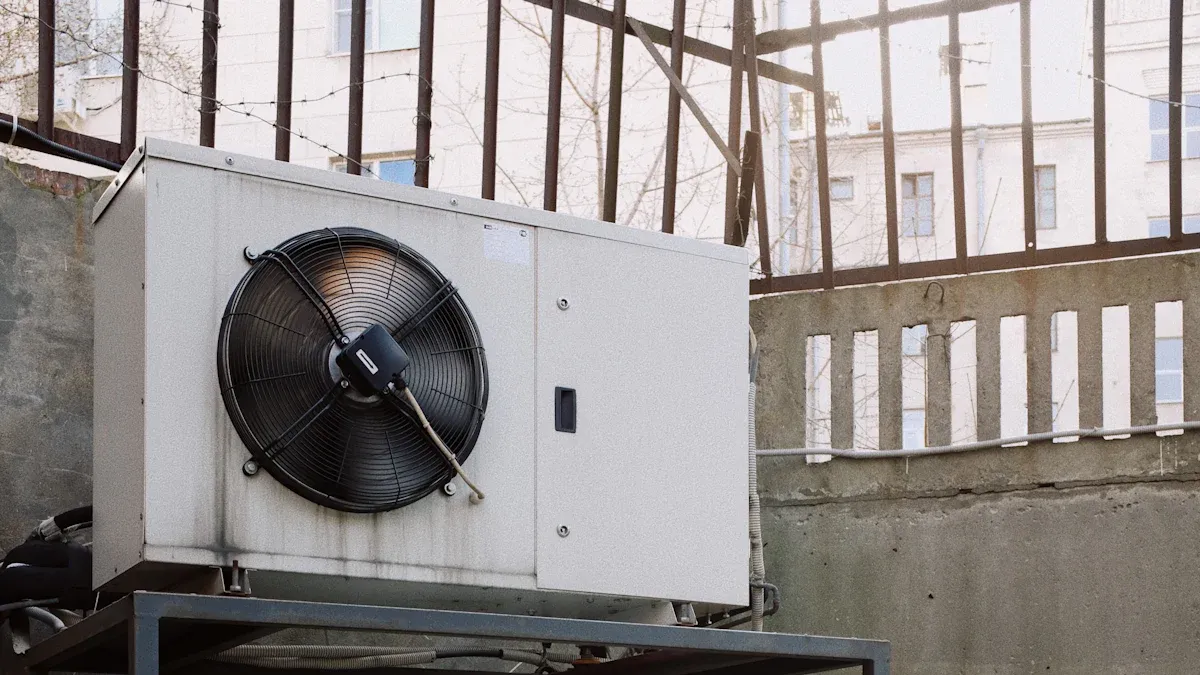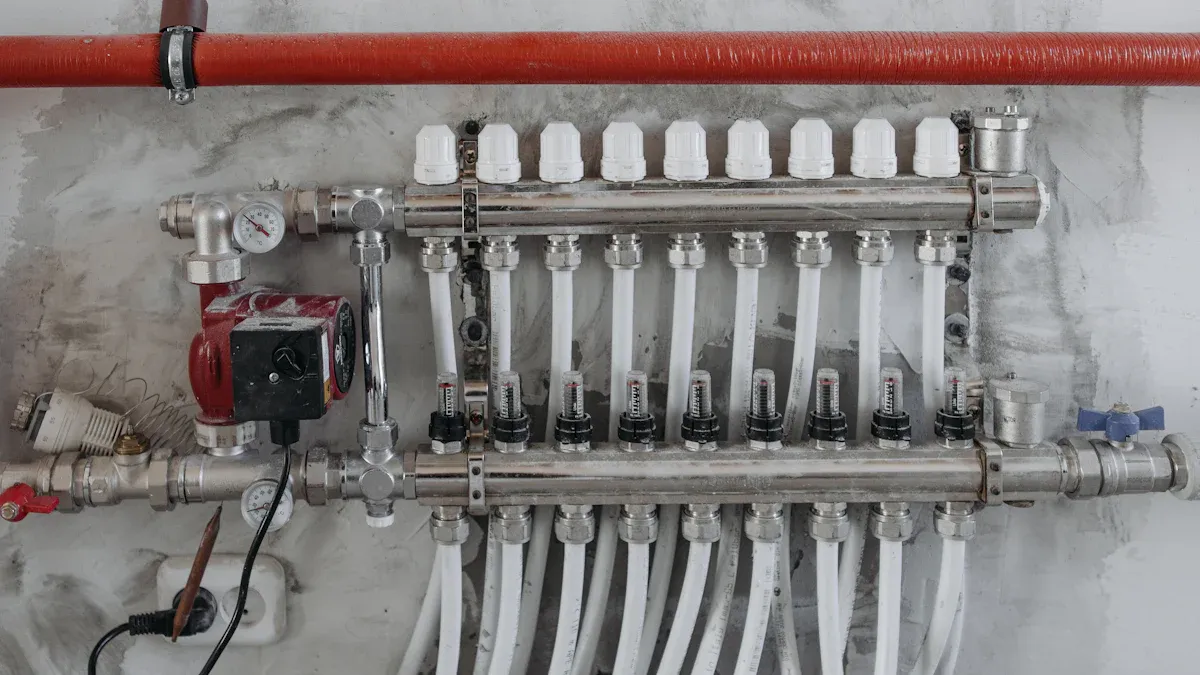
Manufacturers now see remarkable improvements in SiC Heating Element technology. These advancements deliver faster heating, greater energy efficiency, and stronger durability. Industrial users benefit from reduced operational costs and more reliable performance. Engineers report that these innovations also support higher temperatures, enabling new applications in demanding environments.
Key Takeaways
- New SiC heating elements heat faster, last longer, and save energy, helping industries cut costs and improve product quality.
- Advanced designs like nano-structured materials and hybrid elements allow higher temperatures and better durability in tough environments.
- Smart controls and digital tools help monitor element health, reduce downtime, and support eco-friendly, efficient manufacturing.
SiC Heating Element Design Advancements

Nano-Structured SiC Materials
Researchers have developed nano-structured silicon carbide materials that improve heating performance. These materials use tiny grains to create more surface area. This design allows the SiC Heating Element to heat up faster and distribute heat more evenly. Factories now see less energy loss during operation. Nano-structured materials also resist cracking and wear, which means longer service life.
Note: Nano-structured SiC materials help industries achieve higher temperatures with less energy.
Advanced Recrystallized SiC Heating Elements
Engineers have improved the recrystallization process for silicon carbide. This process creates a purer and denser material. The result is a SiC Heating Element that can handle higher temperatures and more cycles without breaking down. Many manufacturers now choose these elements for their reliability and strength. The advanced recrystallized design also reduces the risk of contamination in sensitive processes.
Hybrid SiC and MoSi2 Heating Elements
Hybrid heating elements combine the strengths of silicon carbide and molybdenum disilicide (MoSi2). These elements offer both high-temperature stability and resistance to oxidation. Factories use hybrid elements in environments where standard SiC Heating Element designs might fail. The hybrid approach extends the range of applications, especially in industries that require both durability and flexibility.
| Feature | SiC Only | Hybrid SiC + MoSi2 |
|---|---|---|
| Max Temperature (°C) | 1600 | 1800 |
| Oxidation Resistance | Moderate | High |
| Service Life | Long | Longer |
Innovative Shapes and Configurations
Designers now create SiC Heating Elements in new shapes and sizes. These include spiral, U-shaped, and multi-leg configurations. Each shape serves a specific purpose. For example, spiral elements heat up quickly and fit into compact spaces. Multi-leg elements provide even heating in large furnaces. Custom shapes help industries match their heating needs more closely.
- Spiral: Fast heating, small spaces
- U-shaped: Easy installation, uniform heat
- Multi-leg: Large area coverage, balanced temperature
Integration with Smart Control Systems
Modern SiC Heating Elements now work with smart control systems. These systems monitor temperature, energy use, and element health in real time. Operators receive alerts if a problem occurs. Smart controls help factories save energy and reduce downtime. They also make it easier to adjust heating settings for different products.
Tip: Smart integration allows for predictive maintenance, which prevents costly failures.
SiC Heating Element Efficiency Improvements
Enhanced Thermal Conductivity and Energy Savings
Engineers have focused on boosting the thermal conductivity of SiC Heating Element designs. High thermal conductivity means heat moves quickly through the element. This property allows the element to reach target temperatures faster. Factories can now reduce warm-up times and save energy during each production cycle. Many industries report lower electricity bills after switching to these advanced elements.
Note: Improved thermal conductivity also leads to more uniform heating. Products receive the same amount of heat, which improves quality and reduces waste.
Increased Durability and Service Life
Modern SiC Heating Element technology now lasts longer than ever before. Manufacturers use new materials and coatings to protect the element from wear and tear. These improvements help the element resist oxidation and chemical attack. As a result, the element can operate for more cycles without failure. Many users see a drop in maintenance costs and fewer production stoppages.
- Longer service life means:
- Fewer replacements
- Less downtime
- Lower total cost of ownership
Improved Performance in Extreme Conditions
SiC Heating Element designs now perform well in harsh environments. These elements can handle very high temperatures and rapid temperature changes. They also work in atmospheres with corrosive gases or high humidity. This reliability makes them a top choice for industries like glass, ceramics, and metallurgy.
| Condition | Traditional Elements | SiC Heating Element |
|---|---|---|
| High Temperature | Moderate | Excellent |
| Corrosive Atmosphere | Poor | Good |
| Rapid Temperature Change | Low | High |
Tip: Choosing the right element for extreme conditions can prevent costly equipment failures.
Cost Reduction and Affordability
Recent advances have made SiC Heating Element solutions more affordable. Manufacturers have streamlined production and reduced material waste. These changes lower the price of each element. Companies now find it easier to upgrade their heating systems without breaking the budget. Lower costs also make advanced heating technology available to smaller businesses.
- Key factors driving cost reduction:
- Improved manufacturing efficiency
- Better material sourcing
- Longer element lifespan
Trends Shaping SiC Heating Element Industry in 2025
Sustainability and Eco-Friendly Manufacturing
Manufacturers now focus on reducing the environmental impact of SiC Heating Element production. They use recycled materials and energy-efficient processes. Many companies invest in cleaner manufacturing methods to lower emissions. Some factories have adopted closed-loop water systems to cut waste. These changes help protect natural resources and support global sustainability goals.
Note: Eco-friendly manufacturing not only benefits the planet but also improves a company’s reputation with customers and partners.
Digitalization and IoT Integration
The industry sees rapid growth in digital tools and IoT technology. Smart sensors now track the performance of each SiC Heating Element in real time. Operators receive instant alerts if a problem occurs. Data analytics help teams predict maintenance needs and avoid costly downtime. Many factories use cloud-based platforms to monitor heating systems from anywhere.
- Key benefits of IoT integration:
- Faster response to issues
- Better energy management
- Improved safety
Expansion into New Application Areas
SiC Heating Element technology now appears in more industries than ever before. Companies in aerospace, automotive, and renewable energy use these elements for precise heating. The medical field also explores new uses, such as sterilization and advanced material processing. As technology improves, more sectors discover the value of reliable, high-temperature heating.
| Industry | New Application Example |
|---|---|
| Aerospace | Composite material curing |
| Automotive | Battery component processing |
| Medical | Sterilization equipment |
Real-World Applications of SiC Heating Elements

High-Temperature Furnaces
Many industries rely on high-temperature furnaces for processes like heat treatment, sintering, and metal melting. SiC Heating Element technology allows these furnaces to reach temperatures above 1600°C. Operators see faster heat-up times and more stable temperature control. This reliability supports consistent product quality. Furnace designers often choose spiral or multi-leg elements to match specific heating needs.
Tip: Regular monitoring of element health helps extend furnace life and reduce maintenance costs.
Semiconductor Manufacturing
Semiconductor factories need precise and clean heating. SiC Heating Element designs provide uniform temperature distribution, which is critical for wafer processing and diffusion steps. These elements resist contamination and can handle rapid temperature changes. Many chip manufacturers use them in oxidation and annealing furnaces. The result is higher yield and fewer defects in finished products.
- Key benefits for semiconductor manufacturing:
- Clean operation
- Fast temperature response
- Long service life
Green Energy and Electrification
The green energy sector uses SiC Heating Element solutions in solar panel production, battery manufacturing, and hydrogen generation. These elements support processes that require high efficiency and low emissions. For example, battery makers use them to heat materials for cathodes and anodes. Solar companies rely on them for glass and silicon processing.
| Application Area | Benefit Provided |
|---|---|
| Solar Panel Making | Uniform heating |
| Battery Production | Energy savings |
| Hydrogen Generation | High-temperature range |
Note: SiC Heating Element technology helps drive the shift toward cleaner and more sustainable energy systems.
SiC Heating Element innovations now deliver faster heating, longer service life, and lower costs. Industries see improved product quality and energy savings. Manufacturers and users benefit from reliable performance. Future developments may bring even smarter controls and wider applications.
- Reliable heating
- Energy efficiency
- Lower maintenance
FAQ
What is the main advantage of using SiC heating elements?
SiC heating elements heat up quickly and last longer. They help factories save energy and reduce maintenance costs.
Can SiC heating elements work in harsh environments?
Yes. SiC heating elements resist high temperatures, corrosion, and rapid temperature changes. Many industries use them in tough conditions.
How do smart control systems improve SiC heating element performance?
Smart control systems monitor temperature and element health. They alert operators to problems and help prevent unexpected failures.


